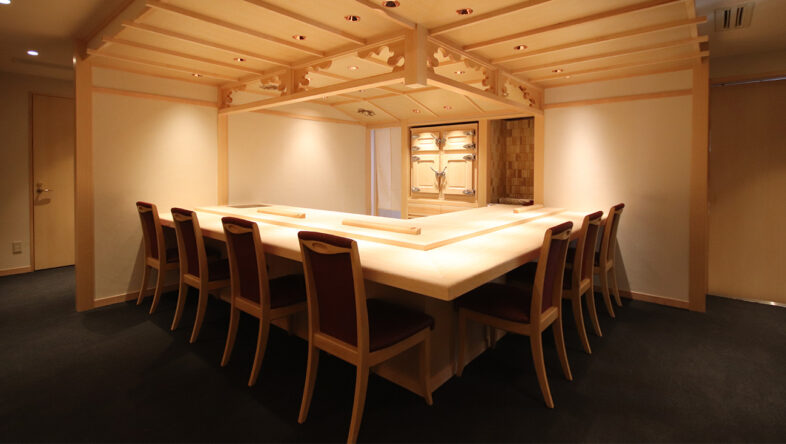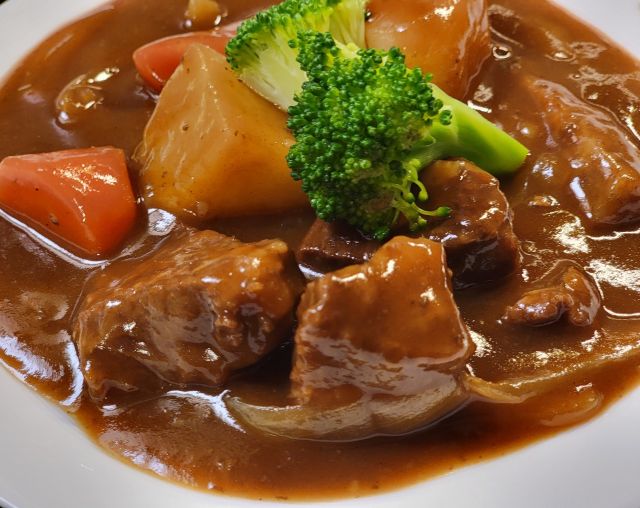
Koku is a comprehensive sensory experience derived from the combined stimuli of taste, aroma, and texture in food. It refers to a phenomenon characterized by the complexity of these stimuli, further enhanced by a sense of spatial expansion and lingering persistence.
Just as taste is defined by the five basic categories of sweetness, saltiness, bitterness, sourness, and umami, Professor Toshihide Nishimura of Kagawa Nutrition University explains that koku can also be described through three fundamental elements: complexity, mouthfulness, and lingeringness.
While these three terms are individually recognized internationally in relation to flavor, there is no direct English equivalent that fully captures the nuance of the Japanese concept of koku when these elements are combined.
The first element, complexity, can be objectively evaluated based on the diversity of chemical compounds present in a food. For instance, fermented foods like soy sauce and miso develop hundreds of additional compounds as they age—meaning a batch aged for two years will typically have much greater complexity than one aged for only one year. Similarly, foods that are cooked for extended periods, such as stews, tend to develop a more intricate flavor profile due to the formation of a wider range of substances, which enhances the sense of koku.
The second element, mouthfulness, is closely tied to retronasal aroma—the aroma that travels from the back of the throat into the nasal cavity during chewing and swallowing. Retronasal aroma plays a critical role in how we perceive flavor. This becomes particularly evident when we catch a cold: with nasal congestion impairing our sense of smell, foods suddenly seem flavorless. In fact, the olfactory system is considered more advanced than the gustatory system in distinguishing fine differences. For example, when chewing vinegared rice, the aromas of vinegar, kelp broth, and seaweed gradually rise through the back of the throat into the nasal passages. Aromatic molecules linger on the mucous membranes of the nasal cavity, allowing the brain to continue interpreting them as part of the overall taste experience.
The third element, lingeringness, is often enhanced by the presence of fat. Fat readily absorbs and retains aromatic compounds, allowing them to adhere to the mucous membranes of the tongue and nasal passages, thus prolonging the flavor experience. While we often describe fatty foods as “rich and flavorful,” it’s important to note that fat itself is tasteless and odorless. The perceived flavor comes from the wide range of compounds that dissolve into the fat during cooking, creating a complex and lasting impression.
However, not all taste and aroma compounds in food are present at concentrations high enough to be consciously perceived. Here, the concept of a threshold becomes crucial—the minimum concentration at which a compound can be detected by the senses. Many flavor and aroma molecules exist below this threshold. While they are not individually detectable, they interact synergistically with other components to subtly but significantly shape the overall flavor impression.
These undetectable compounds function like hidden flavors. Rather than asserting themselves directly, they enhance the definition of other flavors and contribute to a balanced and harmonious profile. In this sense, they can be considered koku-enhancing substances that strengthen the depth, complexity, and persistence of the taste experience.
For example, a small amount of yuzu peel added to miso soup, a pinch of salt concealed in a simmered dish, or the synergistic effect of glutamic acid and inosinic acid in kelp-based broth—all of these contribute not through obvious presence, but by shaping the overall flavor, expanding the taste on the palate, and enriching the lingering aftertaste we associate with koku.
Thus, koku is not simply a “rich flavor” but a nuanced sensory phenomenon created by the interplay of clearly perceptible and imperceptible flavor elements. It emerges from thoughtful ingredient selection, careful cooking techniques, controlled aging, and subtle enhancements such as “secret ingredients.” All these components work together to create a dish with true koku.
This is why koku is so difficult to translate directly into English. It is not just a taste, but a layered sensory experience with temporal and spatial dimensions, lying at the very heart of Japanese cuisine. Understanding koku provides valuable insight into the richness of Japanese culinary culture and the refined craftsmanship that brings its flavors to life.
Related contents:
What is a firm difference between sushi and western fish cuisine?
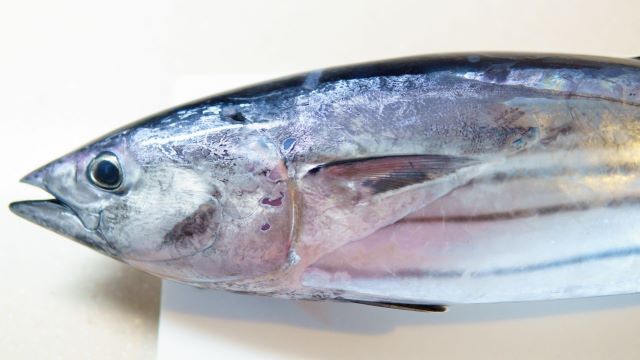
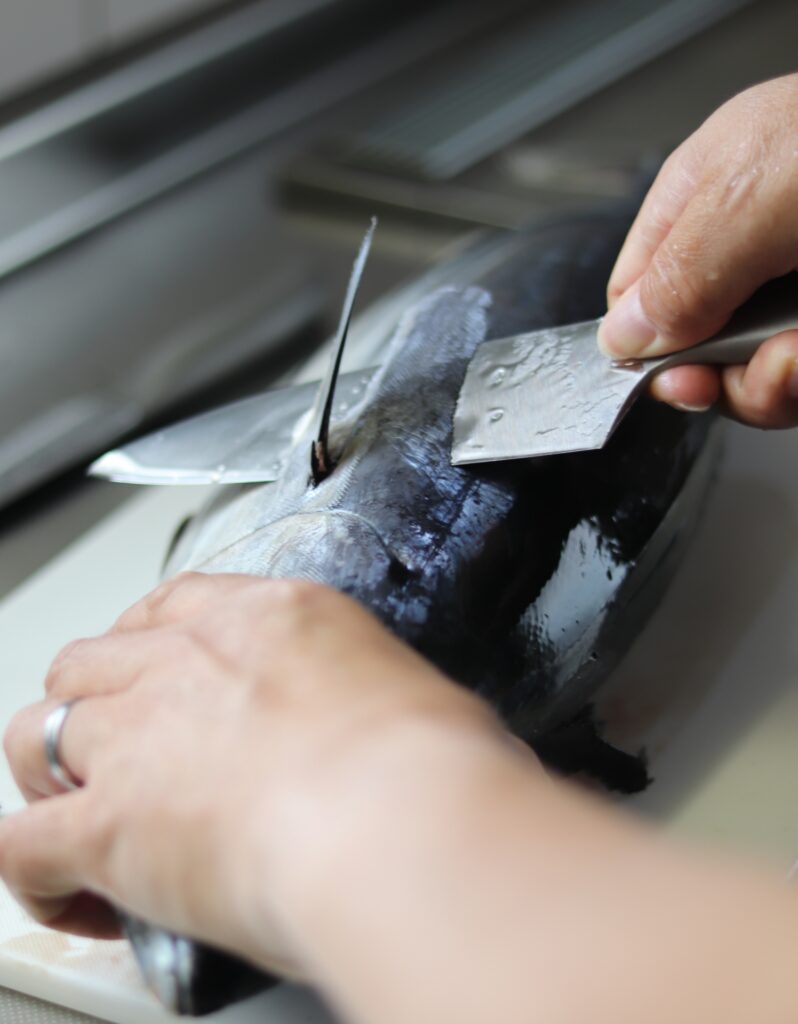
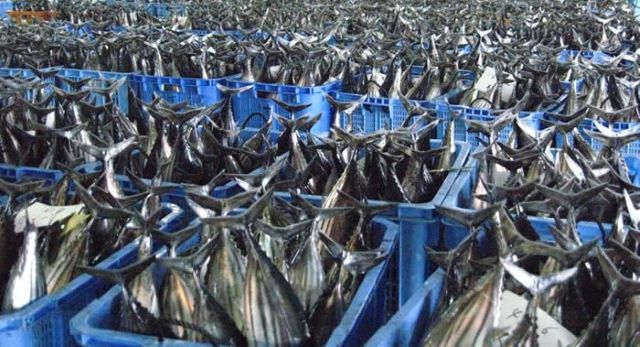


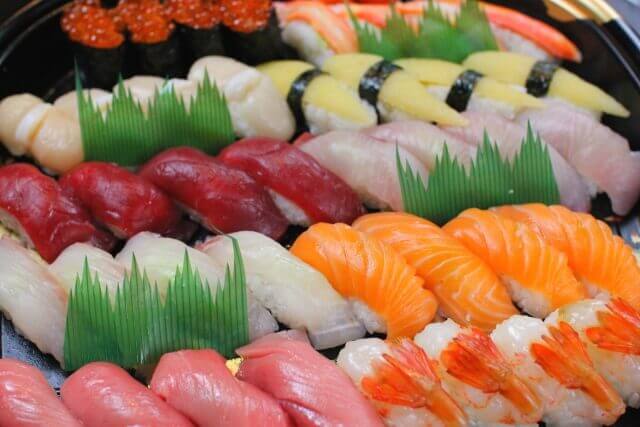
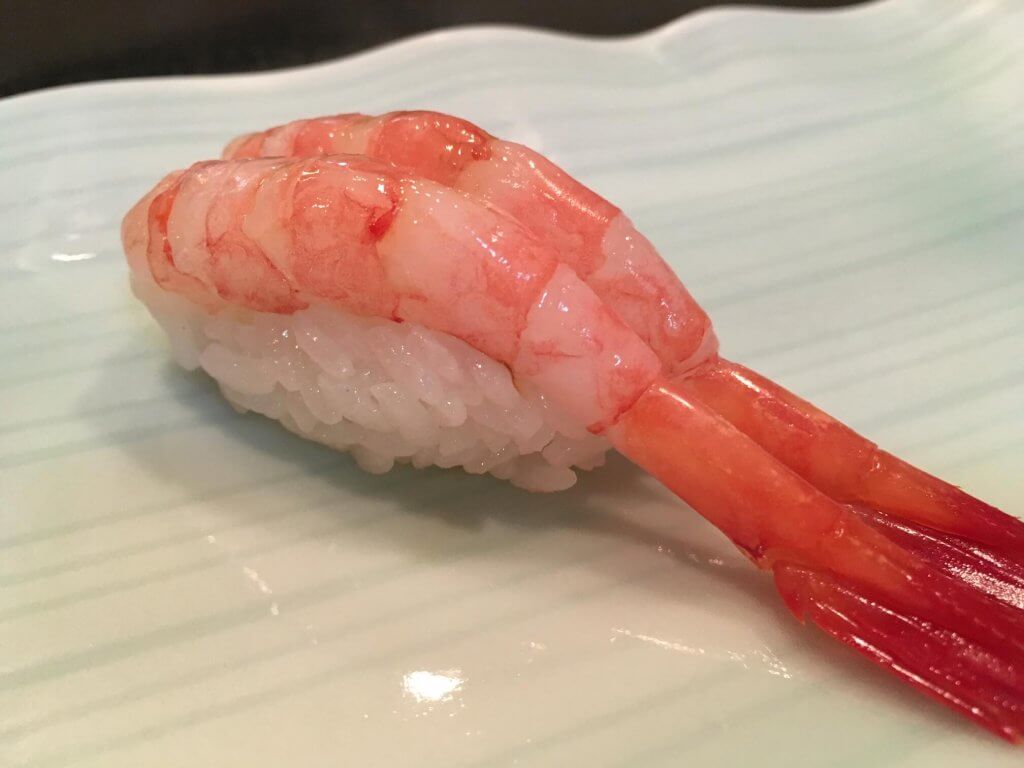 It goes without saying, that each type of fish has its very own scientific name. However, in places like the Toyosu Fish Market, there are seafoods that end up sharing a name.
It goes without saying, that each type of fish has its very own scientific name. However, in places like the Toyosu Fish Market, there are seafoods that end up sharing a name.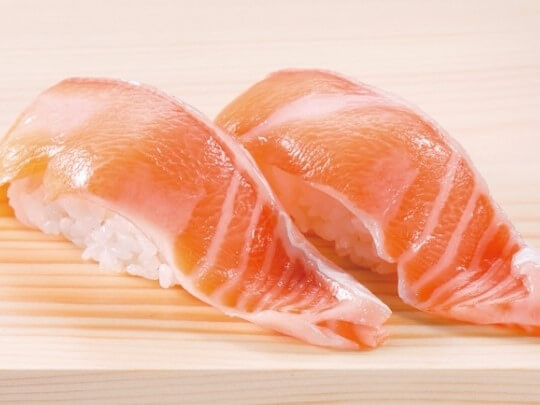 You probably already know this, but “toro tuna” is not the name of a type of fish. “Toro” is the name of a fatty part of the tuna. The fat content and attributes of the belly side of the tuna are completely different from that of the dorsal side. Toro is the name of the part near the head, mostly on the belly side.
You probably already know this, but “toro tuna” is not the name of a type of fish. “Toro” is the name of a fatty part of the tuna. The fat content and attributes of the belly side of the tuna are completely different from that of the dorsal side. Toro is the name of the part near the head, mostly on the belly side.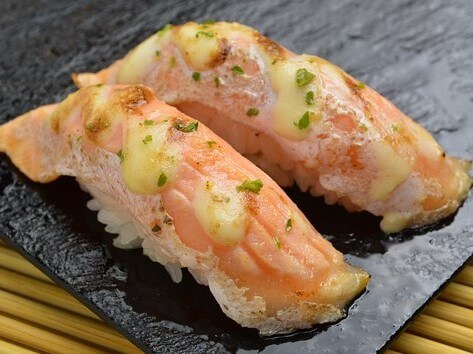 The Donaldson trout is farmed throughout Japan and is used as toro salmon and aburi salmon at conveyor belt sushi restaurants. Since they are supplied directly to the processor (of the salmon) from the farmer without going through the market, they may be sold cheaper than the import price. Just like the imported salmon, this farmed salmon is also fed artificial coloring. There are also already new variants improved from the Donaldson trout being bred. Trout made from breeding Donaldson trout females and steelhead males are called Donaldson steelhead, for instance. They grow even faster.
The Donaldson trout is farmed throughout Japan and is used as toro salmon and aburi salmon at conveyor belt sushi restaurants. Since they are supplied directly to the processor (of the salmon) from the farmer without going through the market, they may be sold cheaper than the import price. Just like the imported salmon, this farmed salmon is also fed artificial coloring. There are also already new variants improved from the Donaldson trout being bred. Trout made from breeding Donaldson trout females and steelhead males are called Donaldson steelhead, for instance. They grow even faster. However, in 1934, a restaurant in Ginza called Kyubey started a revolution. This restaurant is still synonymous with high-end sushi, but at that time many political and business people went there as well. Then, one night… Apparently, one of the regular customers was tired of eating ordinary sushi and said to the chef, Hisaji Imada, “I want to eat some sushi that is more unusual. Ikura (Salmon roe) sounds like it would make good sushi,” as a joke. Imada, who took these words seriously, thought to himself, “But the roe would fall off if put directly on the shari (vinegar rice),” and racked his brain that night for a solution. Finally, he had an idea and said, “I know, I could just surround shari with seaweed and put salmon roe in it.” This is how the Ikura Gunkanmaki was born.
However, in 1934, a restaurant in Ginza called Kyubey started a revolution. This restaurant is still synonymous with high-end sushi, but at that time many political and business people went there as well. Then, one night… Apparently, one of the regular customers was tired of eating ordinary sushi and said to the chef, Hisaji Imada, “I want to eat some sushi that is more unusual. Ikura (Salmon roe) sounds like it would make good sushi,” as a joke. Imada, who took these words seriously, thought to himself, “But the roe would fall off if put directly on the shari (vinegar rice),” and racked his brain that night for a solution. Finally, he had an idea and said, “I know, I could just surround shari with seaweed and put salmon roe in it.” This is how the Ikura Gunkanmaki was born.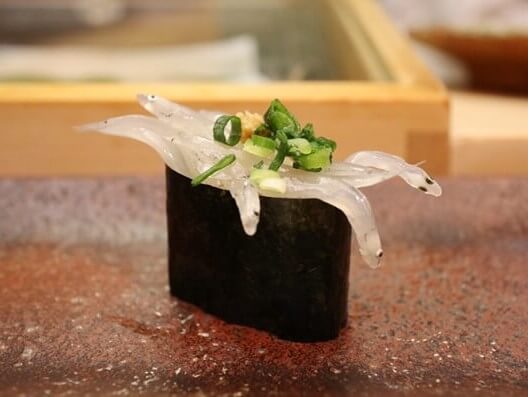 Next, when that customer came in again and Imada nervously served him his new Ikura sushi concept, it was received much better than expected. Gaining confidence from this reaction, Chef Imada put it on his regular menu. The story goes that rumors of the delicious taste spread and other sushi restaurants started to copy it. Then, the term “ikura gunkan-maki”(salmon roe battleship roll) was coined.
Next, when that customer came in again and Imada nervously served him his new Ikura sushi concept, it was received much better than expected. Gaining confidence from this reaction, Chef Imada put it on his regular menu. The story goes that rumors of the delicious taste spread and other sushi restaurants started to copy it. Then, the term “ikura gunkan-maki”(salmon roe battleship roll) was coined.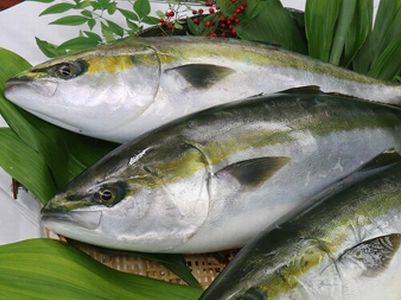 In the United States and other countries, “
In the United States and other countries, “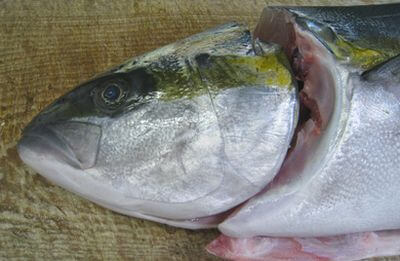 As an aside, three cousins (closely related species) of buri are often used as sushi toppings in sushi restaurants. In the Fish Name Dictionary, the translations of these cousins are Goldstriped amberjack (
As an aside, three cousins (closely related species) of buri are often used as sushi toppings in sushi restaurants. In the Fish Name Dictionary, the translations of these cousins are Goldstriped amberjack (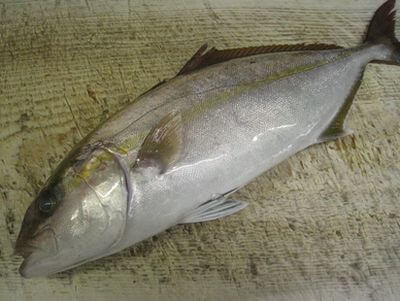 I’m sure you’re interested in the price, and while the price of the seasonal winter buri varies, it is generally around $10-20 per kilogram. Since there is very little distribution of hiramasa, the price is said to be about double that of buri. The price of
I’m sure you’re interested in the price, and while the price of the seasonal winter buri varies, it is generally around $10-20 per kilogram. Since there is very little distribution of hiramasa, the price is said to be about double that of buri. The price of 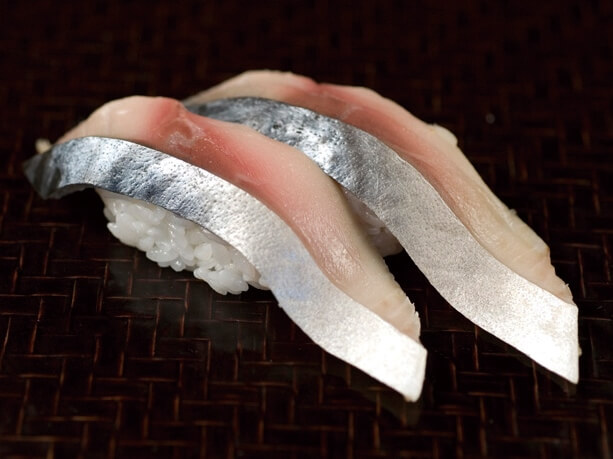 When you sit at the counter and order nigiri a la carte, they will come out in pairs.* There is nothing wrong with counting these in the regular Japanese way “ikko (一個),” “niko (二個).”
When you sit at the counter and order nigiri a la carte, they will come out in pairs.* There is nothing wrong with counting these in the regular Japanese way “ikko (一個),” “niko (二個).”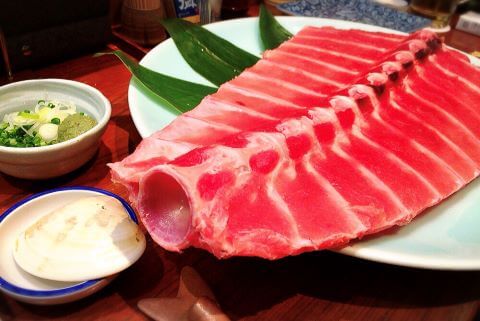 First, what do you imagine when you hear the word “negitoro”?
First, what do you imagine when you hear the word “negitoro”?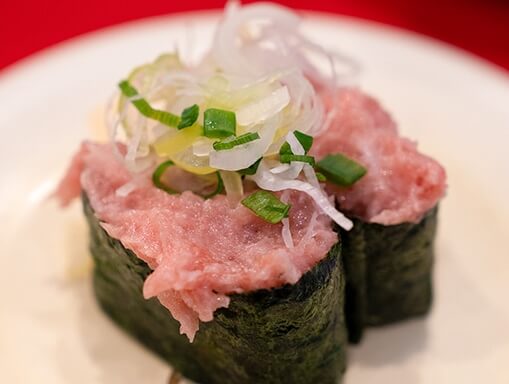 First of all, the lowest in the ranking are the offcuts of tuna that can’t be made into sashimi (mainly Yellowfin or Albacore tuna) and this is mixed with vegetable oil and minced. The type of onion used is normally green onions. You can pick this type out because it will be whitish in color. This version is normally served at conveyor belt sushi.
First of all, the lowest in the ranking are the offcuts of tuna that can’t be made into sashimi (mainly Yellowfin or Albacore tuna) and this is mixed with vegetable oil and minced. The type of onion used is normally green onions. You can pick this type out because it will be whitish in color. This version is normally served at conveyor belt sushi.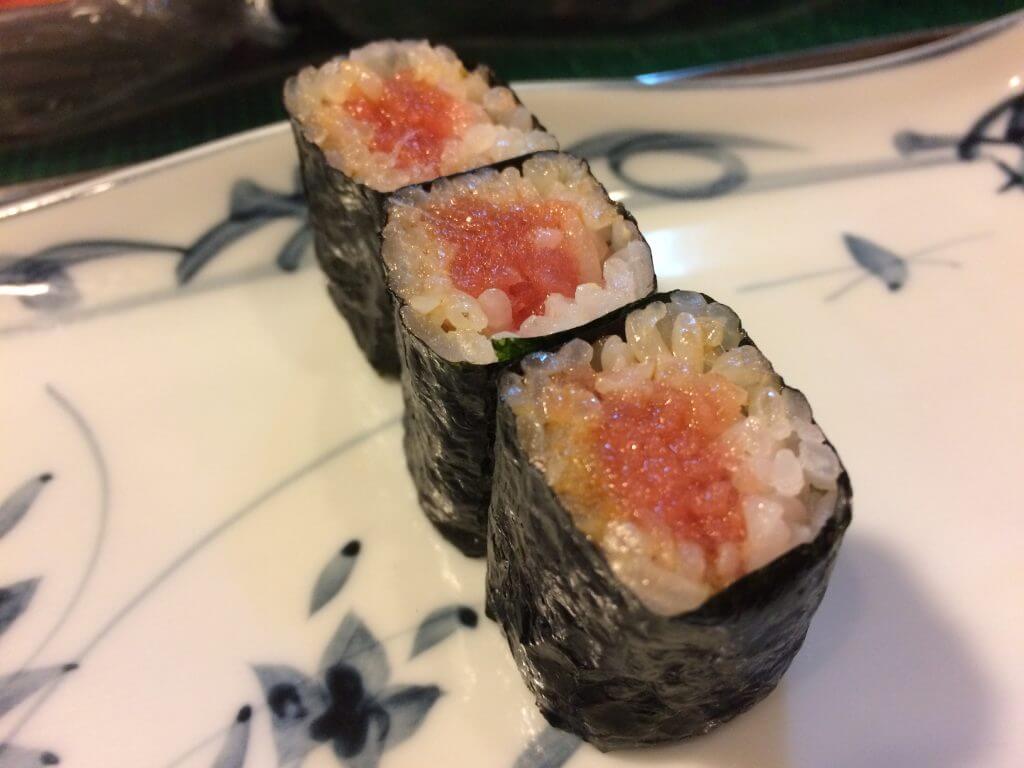 High quality negitoro uses the nakaochi of
High quality negitoro uses the nakaochi of 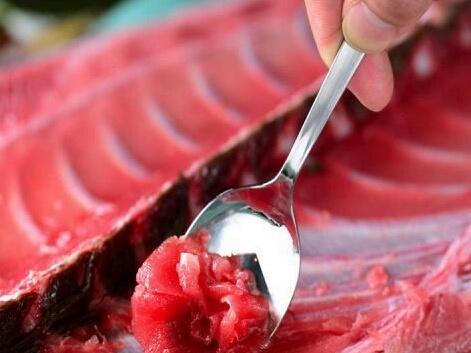
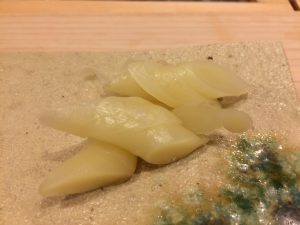 However, at high-end or traditional sushi restaurants where artisanal gari is made in-house, it may be included in the bill. This is because crafting delicious, high-quality gari requires considerable time, skill, and labor, and the cost of fresh, domestic ingredients can be so high that serving it for free would result in a financial loss.
However, at high-end or traditional sushi restaurants where artisanal gari is made in-house, it may be included in the bill. This is because crafting delicious, high-quality gari requires considerable time, skill, and labor, and the cost of fresh, domestic ingredients can be so high that serving it for free would result in a financial loss.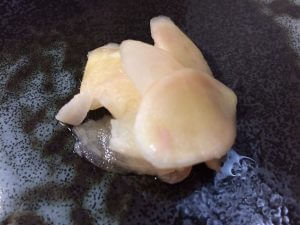
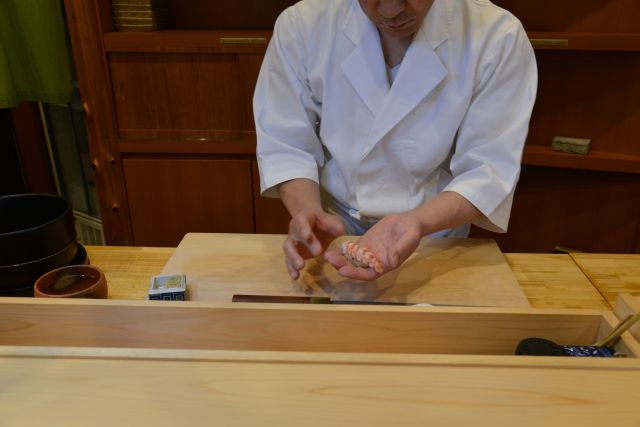
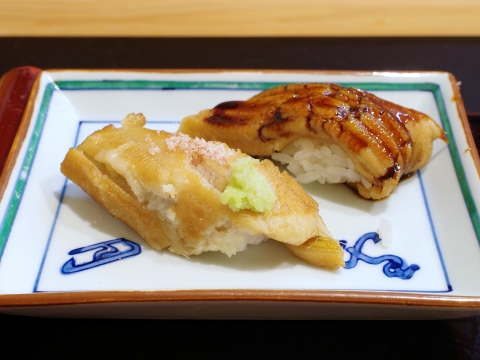
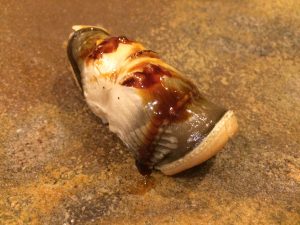

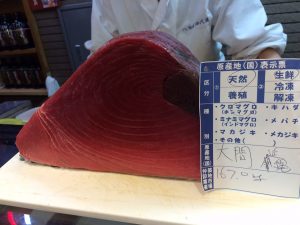 Then, when the sushi chef gets the tuna, he first separates the red, lean meat and the fatty toro portion, rewraps them separately, seals them in plastic, and puts them on ice. Next is waiting for the “young” meat, not yet suitable for eating, to mature. The number of days the fish will be rested depends on the size of the fish and the temperature. The smaller the cut and the warmer the temperature, the shorter the rest time. Generally the time is from 3-14 days.
Then, when the sushi chef gets the tuna, he first separates the red, lean meat and the fatty toro portion, rewraps them separately, seals them in plastic, and puts them on ice. Next is waiting for the “young” meat, not yet suitable for eating, to mature. The number of days the fish will be rested depends on the size of the fish and the temperature. The smaller the cut and the warmer the temperature, the shorter the rest time. Generally the time is from 3-14 days.